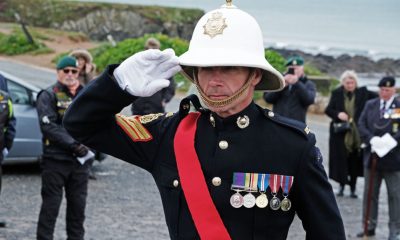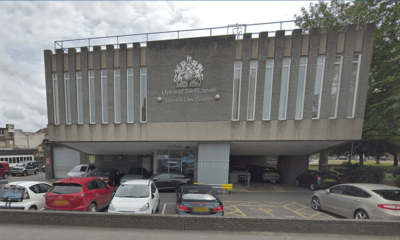News
How safe is your cat?

Missing ear: Peaches went for a wander and came back with a large portion of her ear cut off
A PEMBROKESHIRE woman’s cat was thought to have been caught by a feral hunter on Saturday (Apr 2) in a mistake that led to the cat losing an ear.
The Pembrokeshire vet who inspected Peaches the cat believes that the hunter must’ve thought that she was feral, shaving the left side of her body to see if she had been neutered.
When the hunter saw that she had been spayed, it is believed that she was then taken to the vets and, under anaesthesia, had her ear tipped.
The term ‘feral’ describes members of a domesticated species which have reverted back to living as wild animals, having little or no contact with humans.
It is very difficult for feral cats to be tamed, and this is not recommended because they could be very fearful of people, and this could seriously compromise their welfare.
There are currently approximately one million feral cats living in Britain, alongside the seven million domesticated cats. Strayed or abandoned pets, including pedigree cats, form part of the feral cat population, presenting an ongoing problem to British animal welfare societies.
FERAL CATS
Feral cats can live alone, or in colonies, and can be found everywhere, from towns and cities to more rural areas.
The best solution for feral cats is for them to be neutered and then returned to their familiar environment following the procedure.
The Neyland owner of Peaches the cat, said: “The top of her ear has been cleanly cut. Although she comes and goes as she pleases, usually when I call her it takes a maximum of two seconds to come back home. So, this procedure was done very locally in between the times of 2pm and 6.30pm when I was in Llanelli with my children.
“She is a very tame cat so it is clear to see that she was not a stray. It’s actually quite disturbing to be honest.
“Just be careful and keep an eye on your cats. They usually do these procedures near farms, but I live on a small cul-de-sac nowhere near a farm.”
Some people view feral cats as pests but others, particularly farmers, stable owners and smallholders, value feral cats for their role as working mousers that help protect grain and feed.
Despite their undomesticated nature, these cats can still benefit from a level of care which includes neutering. By neutering these cats, it can help to keep the colony size under control.
Feral cats that require going through the neutering process will usually be caught in a humane cattrap, as they are often too wild to be handled willingly. Following this, the cat is sedated so that a vet can give it a health check and treat it for parasites.
After the health check and neutering are complete, the cat is released back into its familiar territory as soon as possible. This is because the cat could possibly lose its communal scent, potentially leading to it being rejected by other cats in the colony if it is away for too long.
Cats Protection state that this procedure is usually completed in the evening and the traps are collected and inspected regularly to minimise stress to the captured feral cat.
They state that trapping and neutering a large feral colony could take weeks, with regular monitoring being needed to ensure that no cats are missed. Cats Protection aim to capture breeding females first to avoid growth in colony size whilst the neutering process is taking place.
Although catching and removing feral cats may temporarily reduce the numbers, this can lead to what is known as the ‘vacuum effect’, in which cats left behind will continue to breed and other feral cats will move into the area as it is evidently a good source of food and shelter.
NEUTERING
Experts have released that the solution to the feral cat problem is to trap, neuter and return the cats which, over the period of a few years, will aid in reducing the size of the colony whilst deterring other feral cats and keeping vermin levels at bay.
In addition to this, the RSPCA recommend that attempts should be made to find new homes for young kittens or other cats which are not totally feral as they deserve the chance to have their own caring owners.
The owner of the site where the feral colony resides also has to agree to the presence of the animals, which will aid in ensuring a stable existence for the colony. This will also help to make sure that there will be someone to monitor the health of the cats, as feral cats are more likely to get sick and injured than domestic cats.
The RSPCA believes that, after being neutered, each feral cat should have its left ear ‘tipped’, in which 0.5cm and 1cm of the ear will be removed to allow for easier future identification of neutered animals.
Vet Dr Patty Khuly spoke of the benefits of ear tipping: “It helps feline colony workers gauge the success of their efforts and help animal control officers know which colonies of cats are wellmanaged and stable.
“It’s useful and, relative to a dog’s ear crop, it’s absolutely painless when performed under anaesthesia. Cats recover without pawing at their ears or showing any other sign of distress.”
However, the owner of Peaches noted that it was the cat’s right ear that was cut, and not its left ear, and considerably more than 1cm was removed.
The sister of Peaches’ owner, said: “I’m sure in Tenby there was a woman a few years back thinking she was helping by taking matters into her own hands, neutering cats herself and cutting their ears off. Maybe there is someone similar to her about.”
A spokesperson for the RSPCA told The Herald: “We would be concerned to hear that a cat has been injured, and ask anyone with any concerns about animal welfare to contact us. We would welcome any information which might help track down what happened to Peaches as at the moment it is difficult to say for sure what has caused this injury.”
NOT JUST A UK PROBLEM
In other parts of the world, feral colonies are dealt with in a number of ways which are not quite so humane as ear-tipping and neutering. In Greece, Tunisia and Turkey, undomesticated cats are poisoned with Strychnine and in parts of Australia, the animals are killed with cat-specific toxins or feline pathogens such as cat flu or enteritis.
Some UK land-owners have been known to take the law into their own hands, using illegal leghold traps, crossbows, poisons or snares to deal with the cats. These traps have been recorded to kill domestic pets and other wildlife alongside the feral cats.
In 2000, a British man added fuelled cat-owners’ nightmares when he was convicted of killing neighbours’ pet cats using sardines and pilchards laced with cyanide. He did this over several years, killing numerous pets in the process before eventually being caught with enough poison to kill hundreds more.
Eluned Kronacher-Edwards said on social media: “Ear-tipping isn’t cruelty, it is trying to keep the feral population under control. The charities trap cats and if they aren’t neutered, they do so and don’t cut their ears off at all. They just nick the top so they know that they cat had been ‘done’, which would be like us getting our ears pierced.
“I can understand you would be upset if your domestic cat had been accidentally trapped but I hope this explains why. These are people who are rescue workers, not abusers. The cut shouldn’t be a deep enough cut to get infected. This is being done to prevent a raging feral cat population where the animals can get sick or starve.”
Jayne Roach, from Solva, also noted that her cat had recently come home cleanly shaved on one side, which she said was strange as her cat was still bald on the other side from being neutered.
Jayne’s cat, Reggie, is microchipped but was not wearing a collar at the time she was shaved, which she notes is because she “lives in the back of beyond so Reggie would just get it caught.”
SOCIAL MEDIA
A lot of pet owners have taken to social media to say a similar thing to Jane – that their cats often slip their collars, or don’t own one in the first place in case it gets caught, but think that their cats will be safe as they are microchipped and well looked after.
Lindsay Davies, Veterinary Nurse at All Pets Vet Care, said: “I personally haven’t seen domestic cats get confused with feral cats. But, I don’t think it’s easy to tell the difference at all. Unless the cat is microchipped then anyone can pick up a cat off the street, bring it in, claim it’s theirs and get it neutered.
“The only way to prevent that would be compulsory microchipping for cats as well as dogs, but unfortunately it’s unrealistic to regulate that as there are too many feral cats, so it’s a case of educating cat owners on the importance of microchipping their pets.
Ms Davies continued, stating that in the case of Peaches, vets all around Wales need to be pushed to scan the pets that are being brought in to prevent unnecessary eartipping and unwanted neutering. She stated that vets encourage neutering anyway if cats are allowed to roam outside of their homes to prevent unwanted litters of kittens.
“Microchipping cats is something I’m big into talking to owners about, because not only does it have the potential to possibly prevent situations like this occurring, but it also means that when cats get involved in road traffic accidents, or get attacked, injured or lost, it means that the owner can be found as soon as possible, which is especially important if the pet needs treatment,” she concluded.
IS MICROCHIPPING THE ANSWER?
It is possible that microchipping saved Jayne’s cat, Reggie, from having its ear tipped by the vet scanning her microchip and returning her to the area she was picked up from.
A spokesperson for Dyfed- Powys Police said: “Police received a report that a cat in the Neyland area had its ear cut off and had a section of its body shaved on the evening of April 2.
“The cat was taken to the vet for treatment. Police are investigating, and are appealing to anyone who may have seen anything suspicious in the area, or anyone with any information to contact them on 101.”
Cats Protection gave a statement saying: “Obviously Cats Protection is concerned about this incident and the stress it may have caused the cat and its owner.
“With compulsory microchipping for dogs coming into force, Cats Protection would like to see the same for cats as it would help to avoid to these sorts of incidents happening in the future, as well as reuniting lost pets with their owners.”
Community
Anzac Day commemoration service held in Milford Haven
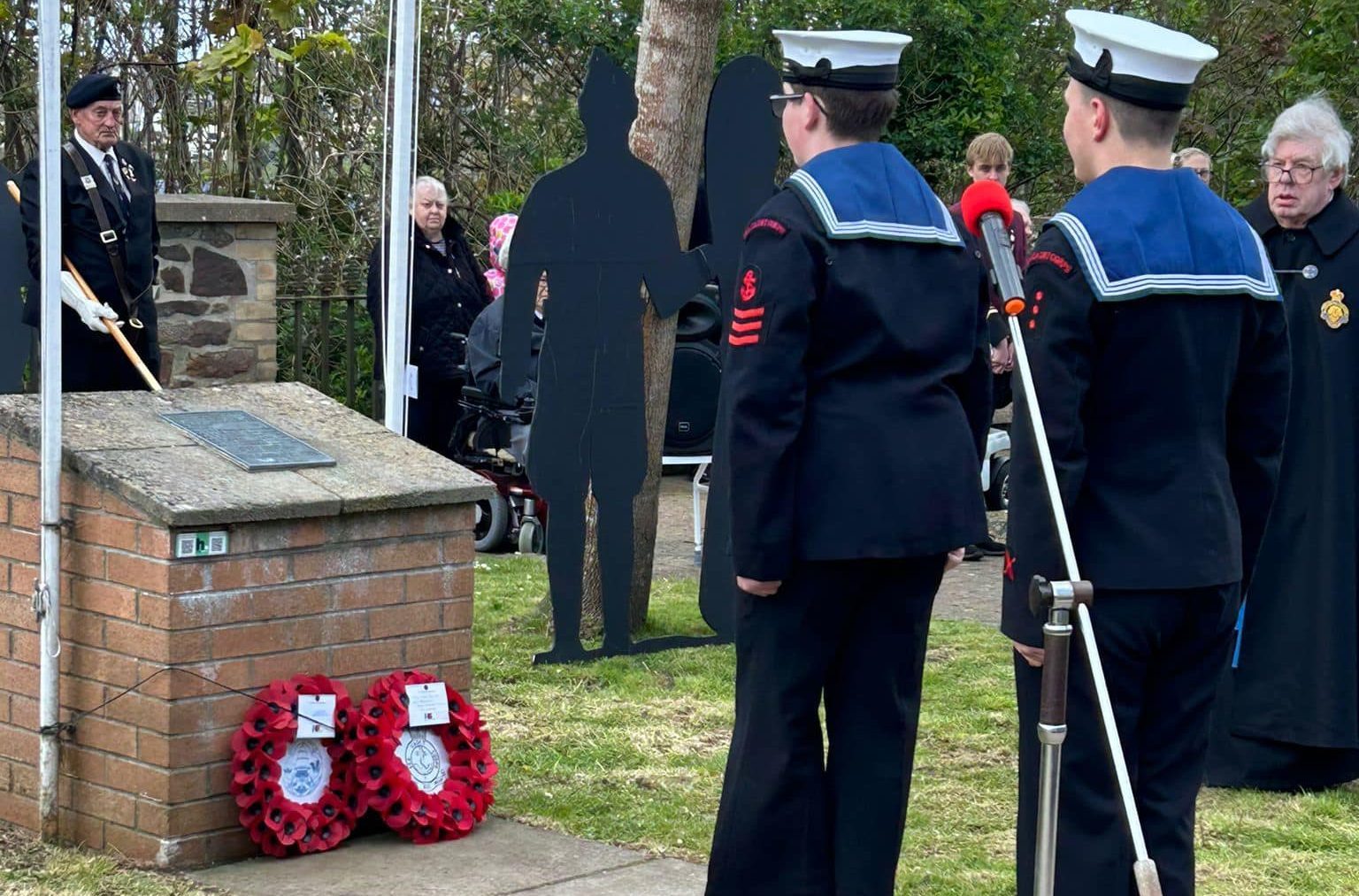
IN a service held on Sunday (Apr 28), the Milford Haven Branch of the Royal British Legion led a poignant commemoration service to mark Anzac Day, honouring the valor and sacrifices of the Australian and New Zealand Army Corps (ANZAC) during the Gallipoli campaign in World War I.
The service, which took place at 11:00am, on Hamilton Terrace, Milford Haven, witnessed a significant turnout.
Attendees included members of the Australian Signals and Signal Company as well as representatives of Milford Haven Town Council and the Milford Haven Sea Cadets.
The service commenced with a welcome and introduction by Lt Col Warren Coetzer, followed by a rendition of the National Anthems of Australia, New Zealand, and Wales, embodying a spirit of unity and remembrance. The anthems were a moving tribute to the camaraderie and international bonds formed in times of conflict.
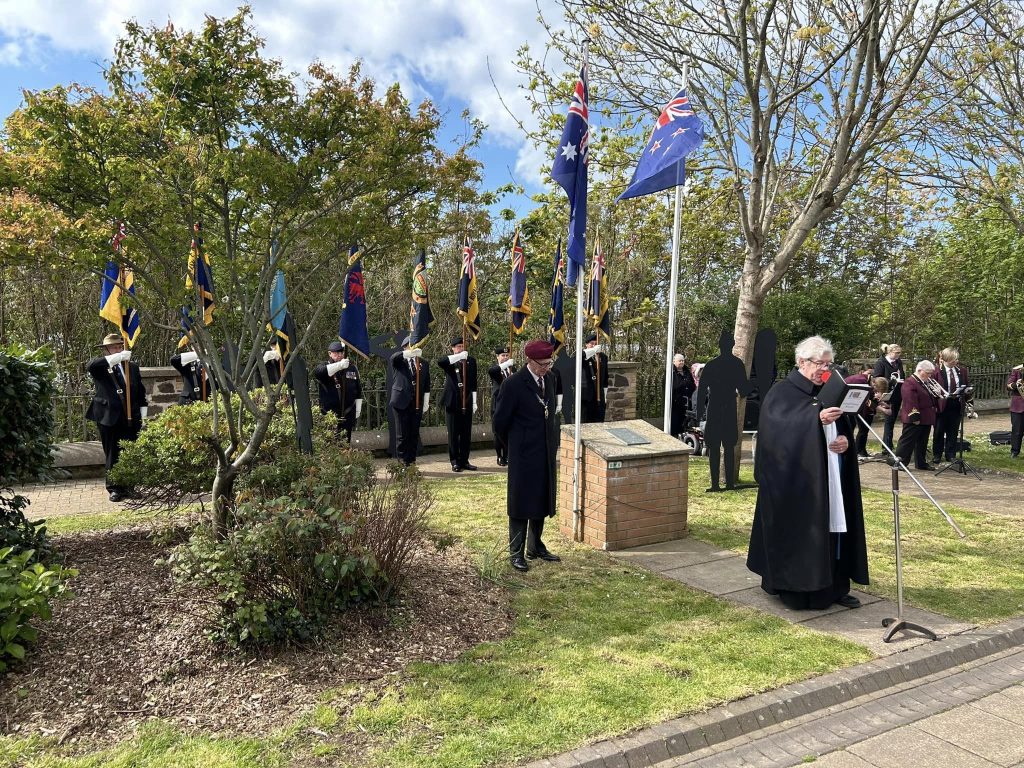
During the service, the Ode of Remembrance was recited, a profound moment that prompted reflection on the courage and fellowship of the ANZAC forces.
The emblematic Rising Sun Cap Badge and the Union Flag were prominently displayed on the event programme, symbolising the service and sacrifice of those who served under them.
Local dignitaries laid wreaths, and a two-minute silence was observed, offering a chance for personal reflection on the cost of war and the price of peace.
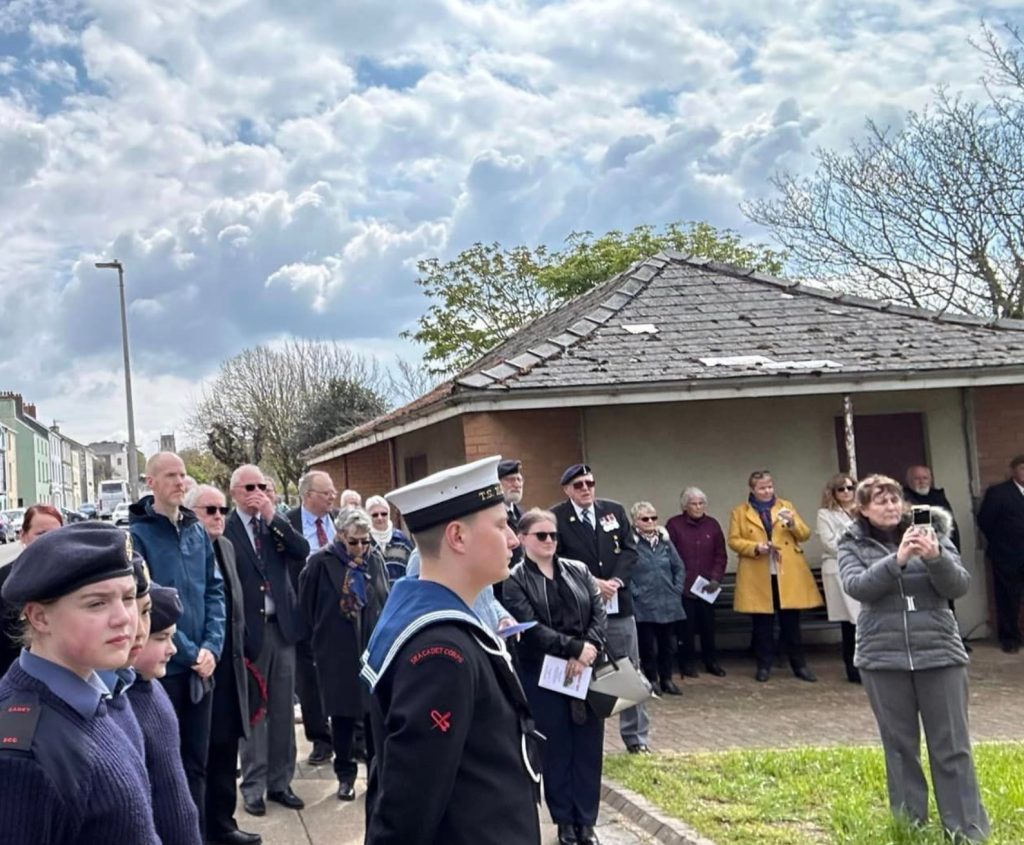
The commemoration concluded with a prayer for peace, leaving the attendees with a message of hope and a renewed commitment to the values for which the ANZAC soldiers bravely fought.
The service was not just a remembrance of past sacrifices but also a reminder of the enduring spirit of the ANZACs, which continues to inspire and guide future generations.
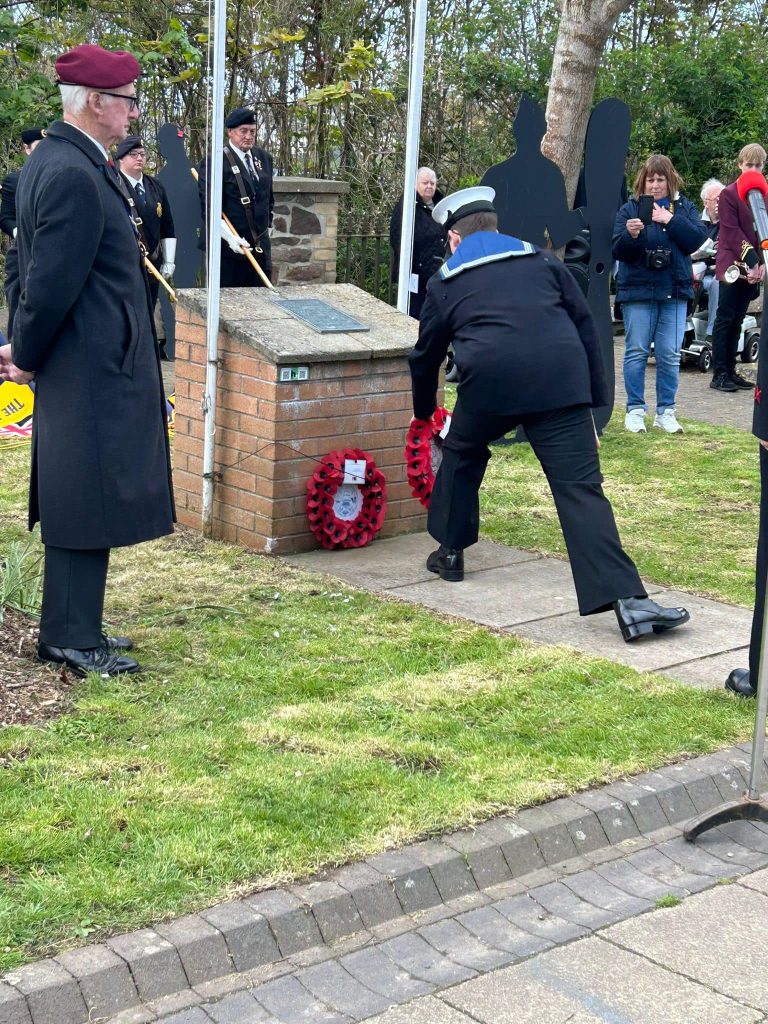
Community
Survey of Picton Castle reveals groundbreaking medieval architecture

THE first ever detailed architectural survey of Picton Castle, Pembrokeshire, has revealed a medieval castle ahead of its time in terms of design and high status living. Much altered in the Georgian period, the castle was surveyed by the author, Neil Ludlow, with Phil Poucher of Heneb – Dyfed Archaeology (formerly Dyfed Archaeological Trust) and funded by the Castle Studies Trust: it reveals a sophisticated building fit for royalty.
However, the building was actually built between 1315-20 by a senior royal government official called Sir John Wogan, who held office in Pembrokeshire, Northern England and Ireland and possibly fought on a military campaign in Gascony.
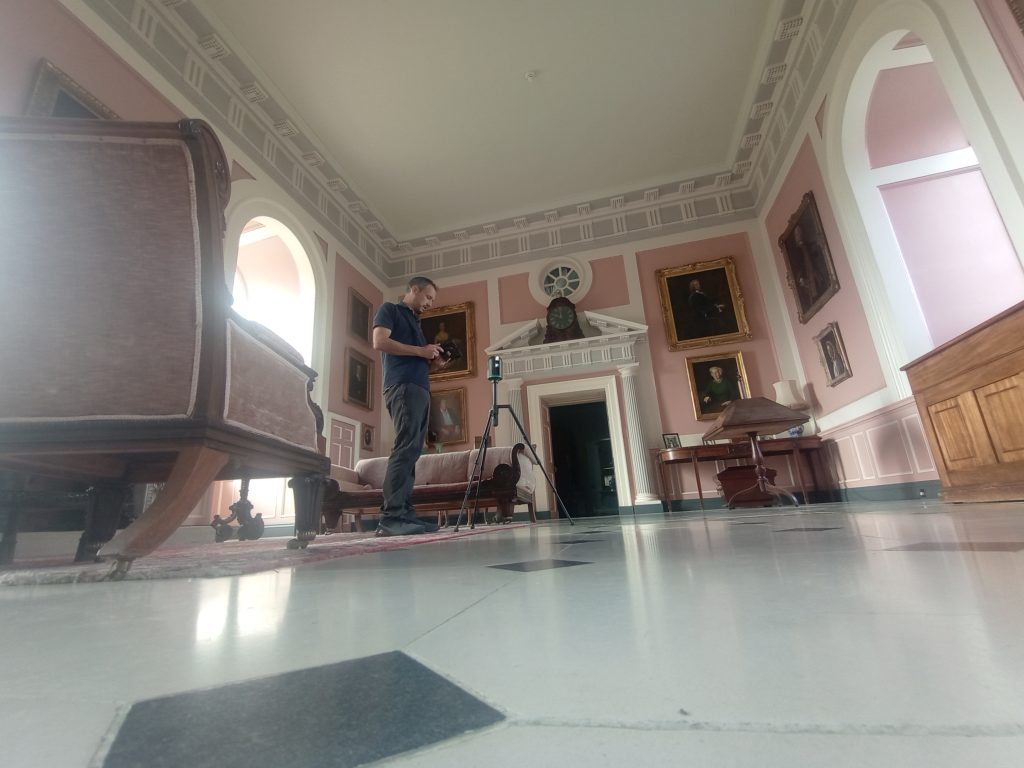
While outwardly it retains much of its medieval flavour, the interiors were extensively made over during the eighteenth century so that it now presents itself first and foremost as a Georgian country seat. But beneath this veneer, much medieval work still survives – though a lot of it is tucked away behind stud-walls, in cupboards, or is otherwise obscured.
Picton’s unique layout makes it a castle of great importance and architecturally ground-breaking for when it was built in the early fourteenth century. Most castles have at least some close parallels, but Picton is effectively one of a kind. Close study shows that it resolves as a central first-floor hall, flanked by services and a chamber-block to form a very early example of the three-unit ‘H-plan’ house.
The gatehouse – unusual in buildings of this kind – led onto an equally unusual ‘grand stairway’ to the hall; a second ground-floor entry probably led to an external kitchen and bakehouse.
The castle’s spatial disposition, access and circulation are meticulously planned, while the domestic appointments show a remarkable level of sophistication for the period, including what appear to be vertical serving-hatches between the ground floor and the service rooms above. At second-floor level, the east towers and gatehouse form two integrated suites of residential apartments either side of a chapel, in a manner firmly rooted within royal planning. The opposite pair of towers, at the west end, seem to have been united internally to form a residential chamber-block, for Wogan’s officials and guests, possibly served by latrines in the former west tower; the present partition walls are later.
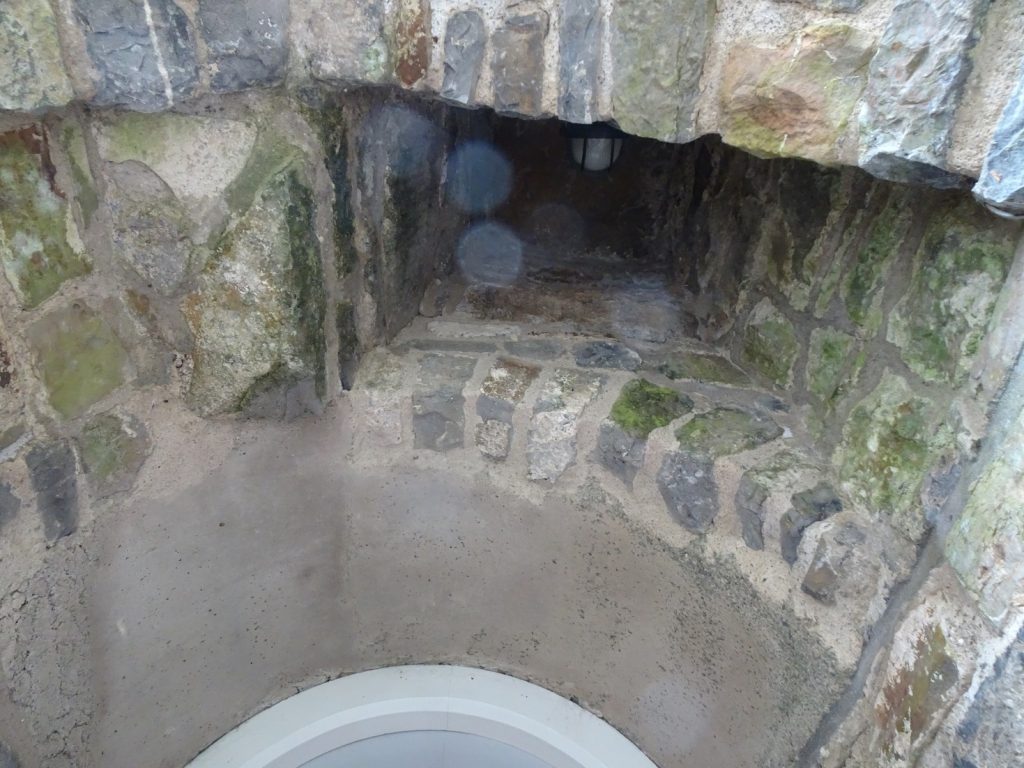
Neil Ludlow told The Pembrokeshire Herald: “The enigmatic castle at Picton in Pembrokeshire is best-known for its magnificent Georgian interiors. But beneath this veneer is a medieval castle, from around 1315-20, with a unique layout. A towered hall-block with a pioneering ‘H-plan’, it reveals elements derived from royal planning, and sophisticated domestic arrangements including serving hatches between the floor levels. These innovations show it to have been a castle that was ahead of its time.”
Castle Studies Trust Chair of Trustees Jeremy Cunnington added: “The Castle Studies Trust is delighted to have funded the first ever detailed survey of Picton Castle and to have learned so much more about the medieval form of this unique building.”
Dr Rhiannon Talbot-English, Director at Picton Castle Trust told this newspaper: “Picton Castle has always been something of an enigmatic mystery: hidden gothic alcoves and arches, secret spiral staircases and untouched medieval Undercroft. Picton Castle Charitable Trust is extremely grateful to the Castle Studies Trust for its generous financial support which has enabled this research to be undertaken and we look forward to sharing this new knowledge with the public in a new exhibition about the early castle.”
Community
Solemn tributes at Freshwater West for WWII maritime tragedy
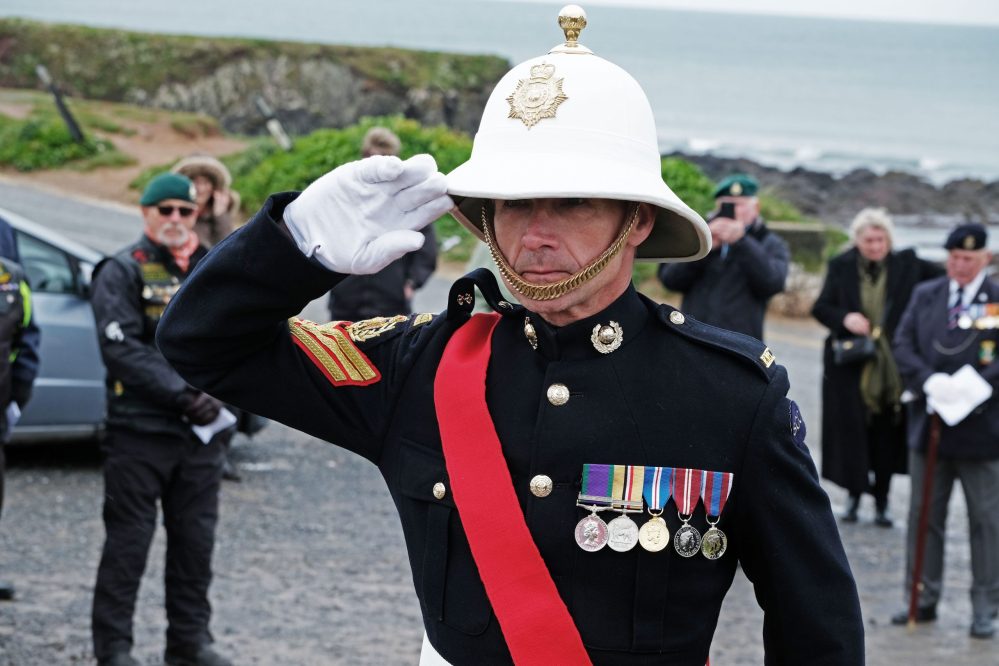
IN an emotional gathering at Freshwater West, Pembrokeshire, the public and veterans convened on April 29, to honour the memory of the 85 souls lost in the tragic sinking of Landing Craft, Gun (LCG) 15 and LCG 16 during a brutal storm in April 1943.
The memorial service took place near the scenic, surf-popular beach, where the community assembled to reflect on the calamity that struck during a perilous wartime operation.
The service highlighted the sacrifices made by those aboard the LCGs, as well as six valiant crew members from the HMS Rosemary, who perished while attempting a daring rescue amidst the tempest.
Originally designed as Landing Craft, Tanks (LCTs), LCG 15 and LCG 16 were converted at Belfast’s Harland & Wolff shipyard to support amphibious operations by equipping them with heavy artillery.
Their redesign included the installation of two 4.7 inch guns intended for use during D-Day, suggesting that, had they survived, these crafts and their crews could have played a pivotal role in the Normandy Landings.
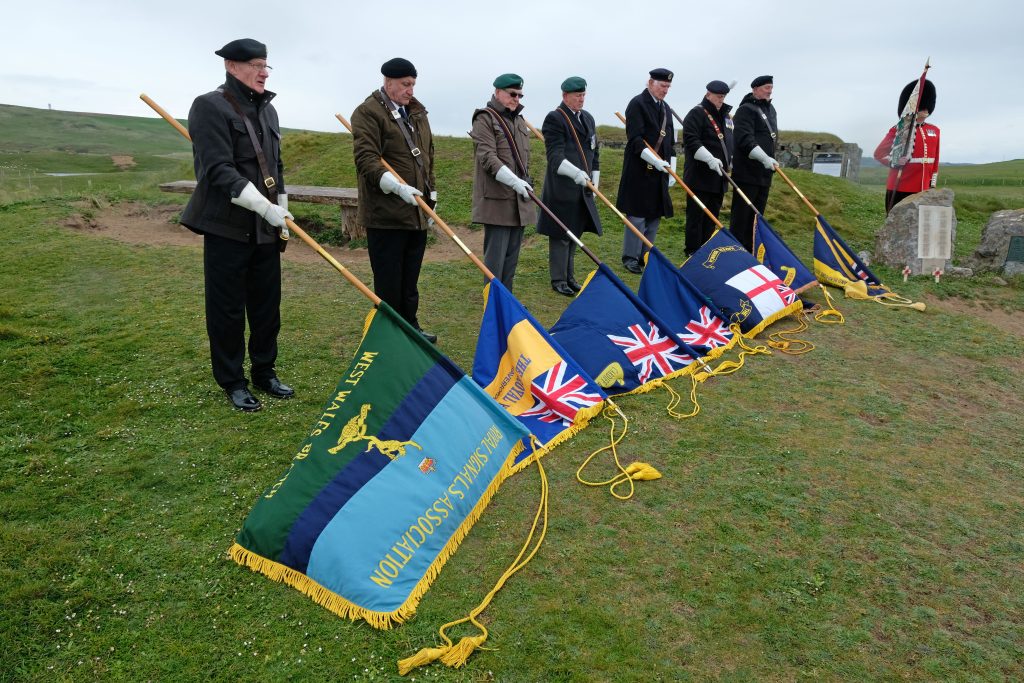
The crafts were en route to Falmouth when they encountered severe weather off the coast of Freshwater West.
Compounded by their flat-bottomed design, which was ill-suited for rough seas, both vessels tragically succumbed to the stormy conditions.
Denied shelter at Fishguard, they were compelled to continue towards Milford Haven, a decision that ultimately led to their sinking.

Today, the wrecks of LCG 15 and LCG 16 lie as protected war graves, and a poignant memorial stands overlooking the beach, a testament to the bravery and enduring legacy of the men lost to the sea.
Visitors to the memorial site at Freshwater West, which also hosts another commemorative marker at Thornton Cemetery in Milford Haven, can reflect upon the harrowing experiences faced by wartime naval personnel and the profound impact of their service.
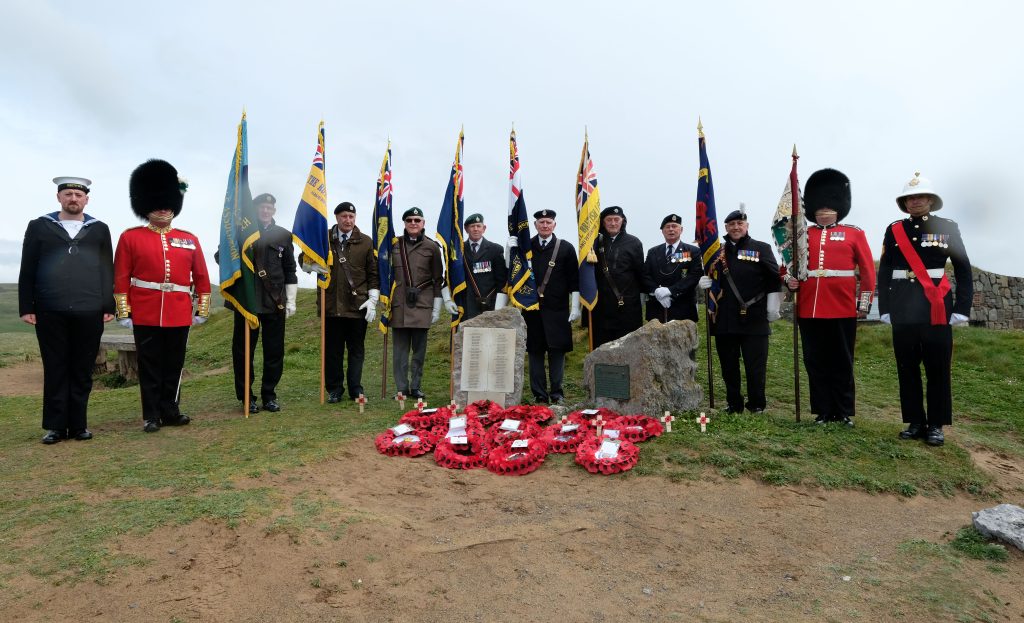
The event served not only as a remembrance but also as an educational experience, particularly for younger generations unaware of the perils faced by their forebears during such tumultuous times.
The memorial at Freshwater West remains open to the public, offering a place for contemplation and respect, against the backdrop of one of Wales’ most beloved surfing beaches, where the echoes of history resonate with the sounds of the waves.
Pictures by Martin Cavaney
-

 News4 days ago
News4 days agoPolice and air ambulances at ‘serious incident’ at West Wales school
-

 Business2 days ago
Business2 days agoLargest Welsh port appoints communications and marketing director
-

 Crime4 days ago
Crime4 days agoPembrokeshire pensioner accused of 17 sexual offences against children
-
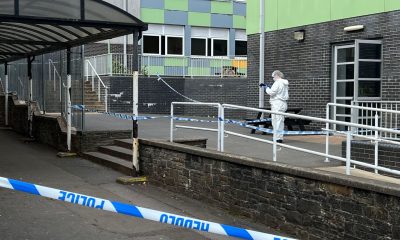
 Crime3 days ago
Crime3 days agoAll three school stabbing victims discharged from hospital, police confirm
-

 Community6 days ago
Community6 days agoCounty Hall to offer space for community banking
-

 Crime6 days ago
Crime6 days agoBrian Davis: Wanted on suspicion of commercial burglary
-

 Sport6 days ago
Sport6 days agoSwifts eyes on double.
-
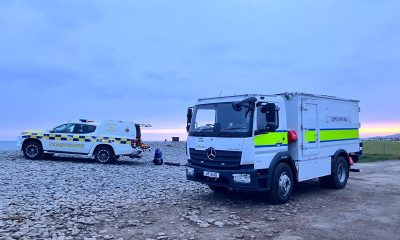
 Community2 days ago
Community2 days agoSuspected explosive device found on west Wales beach













